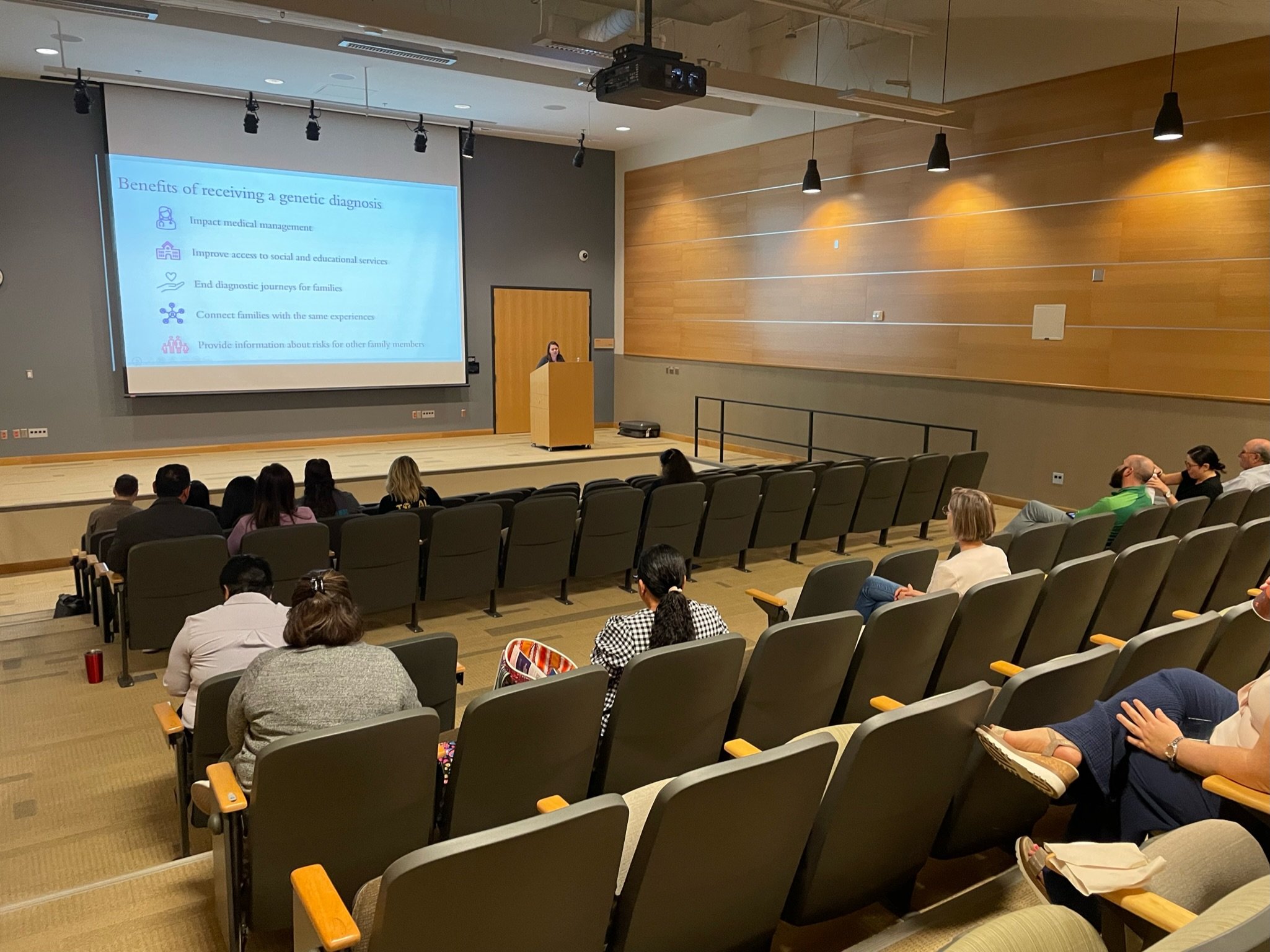Give Access: Improving Genomic Health Equity Through Project GIVE
By Blake Vuocolo, MS, CGC
Blake Vuocolo
How do we improve access to genomic services in underserved and underrepresented populations? This is a question that our team at Baylor College of Medicine has been asking. In Texas alone, we saw a stark disparity in services. Our home in Houston has multiple genetics clinics and a plethora of genetics providers. Yet, 5.5 hours away in the Rio Grande Valley along the Texas-Mexico border, there is not one full-time genetics provider to serve the region of 1.4 million people. This population is primarily Hispanic, one-third are uninsured, and many have a lower socioeconomic background. Despite financial barriers, these families often must wait months and travel hours to have their children seen for a genetics evaluation.
These families already have so much to juggle when they have a child with a complex, undiagnosed disease, and we wanted to change their diagnostic journey narrative. Project GIVE is an NIH-funded study at Baylor College of Medicine that was designed to reduce health disparities in the Rio Grande Valley by combining virtual genomic healthcare and whole genome sequencing to reduce the time to diagnoses for complex children in the region. Consultagene, a tele-genetics platform created at Baylor College of Medicine, is used to connect with both patients and providers in the Rio Grande Valley. Providers can send patient referrals through the Consultagene portal, and the Project GIVE team reviews referrals to determine whether whole genome sequencing is appropriate for the patient. Accepted patients meet with the Baylor genetics team via Consultagene telemedicine services to complete a virtual comprehensive genetics evaluation. As some families in the region have limited access to internet services, our bilingual, bicultural research coordinator meets with families at a local clinic at the University of Texas Rio Grande Valley and uses a Consultagene kiosk for this initial appointment. To minimize the number of appointments and genetic tests for these families, we offer whole genome sequencing to participants of the study. So far, we have been able to find an answer for 20% of families.
Blake Vuocolo presenting a Project GIVE CME talk in the Rio Grande Valley
One of our priorities as we implemented this project was to establish strong connections with the existing medical providers in the region. We found that visiting the Rio Grande Valley to meet with the providers in person has allowed us to build trust in the region. We have successfully engaged with not only pediatricians, but also with medical assistants and ECI professionals who see patients with rare diseases. We also offer free in-person genetics-focused CME events for front-line providers in the region and provide detailed diagnosis summaries to providers to improve their genetics knowledge base. If whole genome sequencing is not felt to be the appropriate test for a referred patient, we offer advice for management or other appropriate genetic testing options. These efforts have allowed us to build up our referrer base and become a trusted community name.
Implementing this project has not come without obstacles. As specialist availability is scarce in this region, many patients have doctors in separate hospital systems that do not easily share medical information with each other. This has posed a challenge for us when trying to assess what, if any, genetic testing or diagnostic studies have been completed. We have found that this is also a challenge for healthcare providers in the region. Therefore, this burden has been placed on the families. How can this system be improved so that families do not have to carry this responsibility? From a Project GIVE standpoint, we provide the genetic testing report and all visit notes to the referring provider as well as other specialists upon request. However, ideally there would be structural change in the region to make sure that all important documents for complex children are accessible. We have also observed that pediatricians and specialists in this region have extremely busy clinics, which at times impacts their ability to send in referrals. Streamlining the referral process and checking in with clinics periodically has helped us to continue to identify patients in need of genetic testing.
Project GIVE Team
We know that genetic counseling and genetic testing positively impacts lives in numerous ways, but there is something extra special about making these services more accessible to all. Seeing a parent’s eyes light up when they hear that their child – who has not yet been able to get any testing – is now receiving the best test we have. Hearing about the challenges of raising children with complex conditions in resource-limited settings and knowing that we are making some part of their care easier. Validating parents’ efforts and seeing relief. Learning about how a result – whether diagnostic or not – has brought comfort to the parents. These are the moments we live for and are what keep us going through the challenges we face.
So, where will we go from here? We are working on trying to make this project even more impactful and sustainable in the region. It is important to us that we continue to identify the patient populations in most need. As we expand our reach throughout the entirety of the Rio Grande Valley region, we are looking at additional sites to see patients who may live further from our established clinic. We are actively exploring ways to engage with community navigators who see the most medically underserved communities in the region. We want to better understand the overall experiences of caring for medically complex children in the Rio Grande Valley as well as how our services impact the families that we serve. We will continue to educate front-line health professionals to ensure that patients in need of genetics services are identified earlier. With each of these efforts, we envision being one step closer to achieving genomic health equity for underserved populations in Texas.



